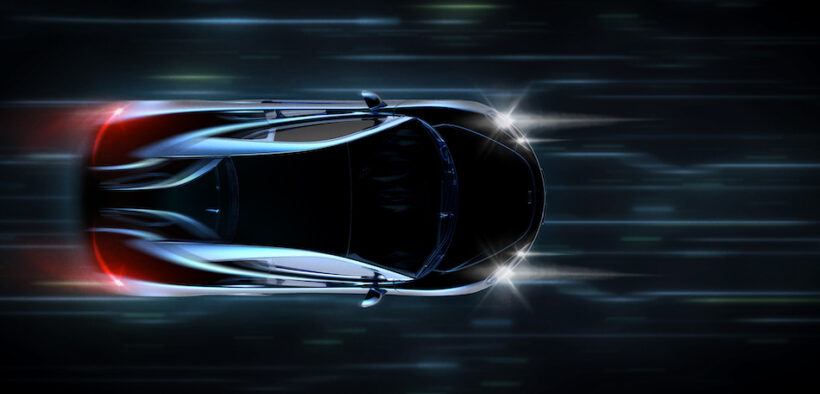Moving Forward
Share

No expert forecast or calculation could have predicted just how much the world changed last year. Though there is still considerable collective uncertainty, mobility is evolving in exciting ways, and disruption is the name of the game in the transport industry.
An increasing number of people own a car, yet many of these owners rarely use their vehicles. Buying a car is expensive and fossil-fuelled driving is behind a lot of emissions which does not support a sustainable lifestyle.
Therefore, the moving people business is ripe for investment, with passengers travelling 20trn km each year in 175 countries using road vehicles. However, conventional car companies that have paved the way for getting from A to B need to act fast and keep informed of changing transport trends and consumer tastes.
“The auto-industry is expected to introduce approximately 600 new battery-electric vehicles and plugin-hybrid EVs by 2025, increasing customer choice significantly.”
Shifting user preferences, an increasing focus on climate change and access to new technology mean car manufacturers must respond to industry changes in real-time, while transforming their business models and working with innovative start-ups within their ecosystem. Everyone from newcomer Uber to old-timer Ford will compete in some areas and cooperate in others.
Surprisingly, there are only two carmakers, Toyota and Volkswagen, in the top five companies that move people around. Tesla, Uber and Didi Chuxing make up the remaining three firms who have disrupted the motor industry. Telsa shifted the auto industry toward electric vehicles, achieved consistently growing revenues, and at the start of last year was the highest performing automaker, in terms of total return, sales growth and long-term shareholder value. Hyundai will offer Uber drivers discounted access to its Ioniq Electric and Kona Electric models, as well as future all-electric vehicle models, and Didi Chuxing is partnering with Volvo to develop self-driving cars for a planned future robotaxi fleet.

Blurry chromatic color tunnel car traffic motion blur. Motion blur visualizies the speed and dynamics.
The auto-industry is expected to introduce approximately 600 new battery-electric vehicles and plugin-hybrid EVs by 2025, increasing customer choice significantly. The scope of this sector is enormous, and ihs Markit calculates that ‘new transport’ will be worth $400bn in revenues by 2030, KPMG points to $1trn while Accenture goes even further stating a $6.6trn figure by 2050, with new transport making up 40% of the total.
“It is likely that the younger generations’ growing environmental concerns will eventually drive regulation changes that will force a shift toward electric vehicles.”
In 2016, John Zimmer, a Lyft co-founder, predicted that car ownership would all but die out in major US cities by 2025, but car ownership isn’t completely disappearing. However, how will the post-pandemic world look for car makers? The COVID-19 pandemic hit the automotive industry in Western Europe hard. The May registrations (YTD results) are down by 43.5%, equivalent to nearly three million registrations fewer than the same period last year. While the pandemic did impinge on short-term automotive demand, it accelerated important long-term trends including digitisation, electrification and connected cars. However, fashionable innovations before COVID-19 such as using public and shared modes of transport are in reverse gear, as people return to the safety of personal transport.
Capgemini’s latest report ‘Shifting Gears: Covid-19 and the fast-changing automotive consumer’ – quizzed 11,000 consumers from 11 countries during October and November 2020, with those countries representing 62% of global annual passenger vehicle sales in 2019. The report, examining consumers’ car purchasing behaviours across the globe during the coronavirus pandemic, shows buoyancy in the automotive industry and indicates a robust future. According to the research, 87% of consumers around the world are shunning public and shared modes of transport and would prefer to have their own vehicle, while almost half intend to buy a new car in the next year. Individual modes of transport offer a safe haven for people who are hesitant to share, with the current concerns around health and safety.
New transportation methods such as ride-hailing, car sharing, and self-driving vehicles will encourage traditional automotive businesses to stay on top of cutting-edge technology but is will not make the private car obsolete. Owning a car provides a degree of freedom that cannot be matched by any other transportation offering, and people will not want to give up that freedom for any reason except being unable to afford it. It is likely that the younger generations’ growing environmental concerns will eventually drive regulation changes that will force a shift toward electric vehicles.
As transport needs and preferences change, there is always room for more advocates and innovators. The Whim app bundles travel options from multiple providers – taxis, rental cars, public transport, city bikes – into a single, seamless service, advising subscribers on the best route and transportation modes for their mobility needs. Deutsche Bahn, Germany’s state-owned railway company, offers an app that also lets passengers’ avail of a variety of travel options.
In addition to discovering new companies and mobility choices, consumers are interested in new services. This shift is clear in automotive retailing, where a future away from bricks and mortar is emerging. Dealership visits remain an important part of the decision making process, but digital channels are growing in value.
Innovation is required to help carmakers ride through the dramatic changes expected in the mobility industry, and by tapping into emerging markets with targeted offers, automotive brands will be able to reach whole new customer segments.

























